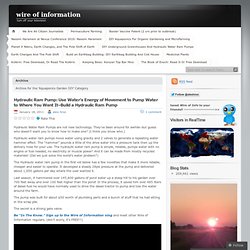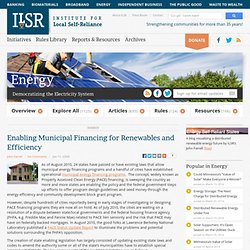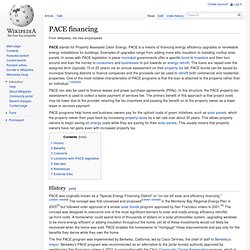

Aquaponics Garden DIY. Hydraulic Water Ram Pumps are not new technology.

They’ve been around for awhile–but guess who doesn’t want you to know how to make one? (I think you know who.) Hydraulic water ram pumps move water using gravity and 2 valves to generate a repeating water hammer effect. The “hammer” pounds a little of the drive water into a pressure tank then up the delivery hose for your use. The hydraulic water ram pump is simple, reliable, pumps water with no engine or fuel needed, no electricity or muscle power! The Hydraulic water ram pump in the first vid below has a few novelties that make it more reliable, cheaper and easier to operate. Last season, it hammered over 145,600 gallons of pond water up a steep hill to his garden over 700 feet away and over 100 feet higher than the pond! The pump was built for about $50 worth of plumbing parts and a bunch of stuff that he had sitting in the scrap pile.
The secret is a strong gate valve. Be “In The Know.” Be “In The Know!” Florida Green Building.
Successful Small Farming in Florida. Marketing. Untitled. Aerator Motor Conversion Project City of Clearwater Electrical costs at the City of Clearwater’s three advanced wastewater treatment plants (AWTP) have nearly doubled since 2003.

This increase prompted development of the Water Pollution Control’s Motor Conversion Project. First the city reviewed savings data from the City of Dunedin’s Motor Conversion Project. Then Clearwater converted a 125 hp aerator motor at one AWTP to test the technology. The aerator previously drawing 82 amps now draws 56 amps. Contact: John Milligan Water Pollution Control Superintendent Public Utilities Department City of Clearwater 1650 N.
Clearwater, FL 33765 Phone: (727) 562-4960, ext. 7248 Integrated Water Management Strategy City of Clearwater The City of Clearwater has developed an Integrated Water Management Strategy that will enable the city to manage the cost of water, conserve water resources, protect the environment and ensure water is available in the future.
Pace property assessed clean energy florida. PACE Program (Property Assessed Clean Energy) Financing 1BOG.org. The best way to find out about solar financing is to sign up for 1BOG’s group discounts on solar panels for your home.

If you’re in an active solar city we’ll give you a call to answer your questions. If you aren’t in an active campaign area it’s still a good idea to sign up, because we’ll keep you in the loop on group solar discounts and financing in your area.
Sustainable Communities, Farms and Ranches. Organic Farming. CSA. Food Quality. Decentralization. Employee Owned. Grants. Cooperatives. Green Collar Jobs. Solar. Renewable Funding. Paralyzing the PACE: Florida’s property assessed clean energy program likely strangled by Fannie Mae and Freddie Mac « Florida Green Building Law.
The Florida legislature recently took a step towards creating a more sustainable future for our state.

On May 27, 2010, Governor Crist signed into law House Bill 7179, which created Florida’s version of the Property Assessed Clean Energy (PACE) program. Florida’s PACE bill enables local governments to levy non-ad valorem assessments to fund improvements related to energy efficiency,conservation,renewable energy and wind resistance. This type of program is more commonly known as a land-secured financing district or special assessment, which Florida municipalities have long used as a tool to finance projects that serve a public purpose, including street paving and the creation of parks. The novelty of the PACE program is that it is not a mandatory ad valorem property tax, has minimal fiscal impact on local governments, is not linked to the financial credit status of the property owner, and is completely voluntary. PACE programs are funded through the issuance of local revenue bonds. Go Green with Pace Legislation.
Municipal Energy Financing: Lessons Learned. Twenty states now allow cities and counties to finance energy efficiency retrofits and on-site renewable energy generation and repay the loan with a property tax assessment.

Five municipalities launched Property Assessed Clean Energy (PACE) programs in the past two years and these programs have spent $37.5 million to help enable close to 2,000 voluntary residential retrofits. Enabling Municipal Financing for Renewables and Efficiency. As of August 2010, 24 states have passed or have existing laws that allow municipal energy financing programs and a handful of cities have established operational municipal energy financing programs.

The concept, widely known as Property Assessed Clean Energy (PACE) financing, is sweeping the country as more and more states are enabling the policy and the federal government steps up efforts to offer program design guidelines and seed money through the energy efficiency and community development block grant program. However, despite hundreds of cities reportedly being in early stages of investigating or designing PACE financing programs they are now all on hold. As of July 2010, the cities are waiting on a resolution of a dispute between state/local governments and the federal housing finance agency (FHFA, e.g. PACE Financing. PACE Financing. PACE stands for Property Assessed Clean Energy.

PACE is a means of financing energy efficiency upgrades or renewable energy installations for buildings. Examples of upgrades range from adding more attic insulation to installing rooftop solar panels. In areas with PACE legislation in place municipal governments offer a specific bond to investors and then turn around and loan the money to consumers and businesses to put towards an energy retrofit.
The loans are repaid over the assigned term (typically 15 or 20 years) via an annual assessment on their property tax bill.